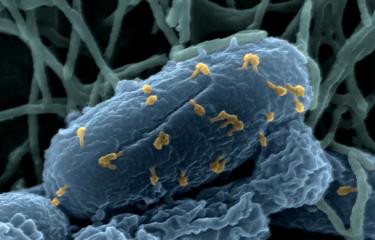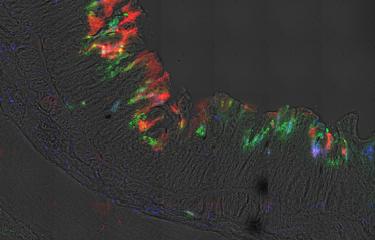In 2020 when many countries around the world struggled with a large burden of COVID-19 cases, the Lao PDR stood out as a country with low reported numbers of SARS-CoV-2 infections. Was it due to a low circulation of the virus or to an inadequate surveillance system? To answer this question, a seroprevalence study has been conducted by Institut Pasteur du Laos, in collaboration with Institut Pasteur.
Appointed reference laboratory for COVID-19 by its national health authorities, the Institut Pasteur du Laos is at the heart of the fight against this disease. To achieve its mandate additional equipment and consumables were necessary. Several funders, and in particular the Agence Française pour le Développement (AFD), provided an exceptional emergency support via various running initiatives such as ECOMORE II in South-East Asia.
Observing a low number of reported cases of SARS-CoV-2 infection, the virus responsible of COVID-19 disease, the health authorities of Lao PDR have mandated Institut Pasteur du Laos to perform a study in order to understand whether there was an undetected circulation of SARS-CoV-2 within the country.
In partnership with Institut Pasteur, a seroprevalence study has been conducted in 2020 in five provinces. Thanks to the collaboration with Lao Tropical Public Health Institute, Lao University of Health Sciences, Lao National Centre for Laboratory and Epidemiology and Central,
Provincial and District Hospitals, more than 3000 participants were included from the general population, healthcare workers and some individuals in contact with the wildlife, which is suspected to be a natural reservoir of many coronaviruses.
Three different diagnostic tests to confirm data
During the study, it was important to corroborate the results of the SARS-CoV-2 diagnostic tests. To that end three different laboratory tests were used to look for antibodies. Two ELISA tests, detecting the antibodies against the SARS-CoV-2 nucleocapsid (N) and spike (S) proteins respectively, and a third, rapid test against SARS-CoV-2 antibodies.
“The reason why we used all the three tests is that there is a certain amount of anti-SARS-CoV-2 antibodies cross-reactivity with other coronaviruses. By using different tests, we can be sure that any individuals positive for all three were infected by SARS-CoV-2”, explains Dr Antony Black, Head of Vaccine Preventable Disease Laboratory at Institut Pasteur du Laos.
The participants were therefore considered to being exposed to SARS-CoV-2 when all the three tests were positive. Out of 3000 persons, only two participants had positive results from two tests, and none had positive results from the three tests. These extremely low numbers suggest that there was no circulation of SARS-CoV-2 in Lao PDR in 2020.
Institut Pasteur supported the study by providing the recombinant proteins and plasmids, as well as by helping with the ELISA tests and the interpretation of the results.
Conclusive results for LAO PDR
“These results, published in the Lancet Regional Health - Western Pacific, are not surprising”, explains Dr Antony Black, “the government put in place some radical measures since March 2020: a three-months lockdown, shutting of schools and entertainment venues, and a mandatory quarantine upon arrival for international travelers, even if their PCR tests were negative.
In 2021, some SARS-CoV-2 infected individuals illegally crossed the border from Thailand, leading to an increased number of imported cases and to a community transmission of the virus in Lao PDR. This proves that barrier measures, large vaccination campaigns, and travel corridors with other countries where the situation is similarly controlled are successful and still needed today.
Low seroprevalence of COVID-19 in Lao PDR, late 2020
Lancet Regional Health - Western Pacific,
DOI: 10.1016/j.lanwpc.2021.100197





